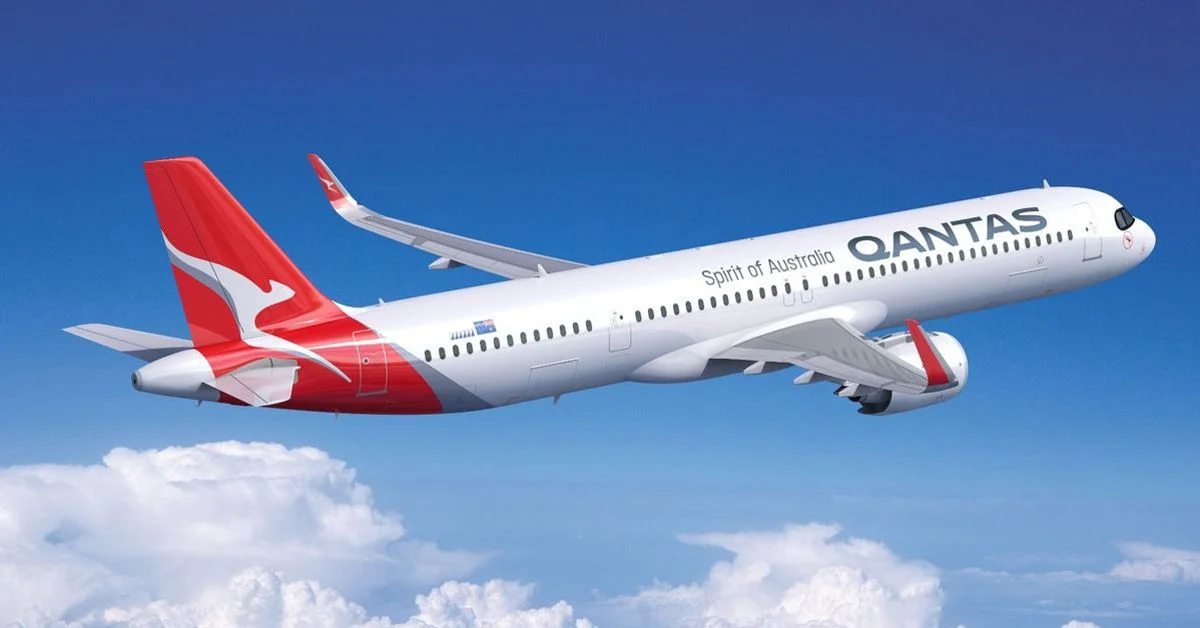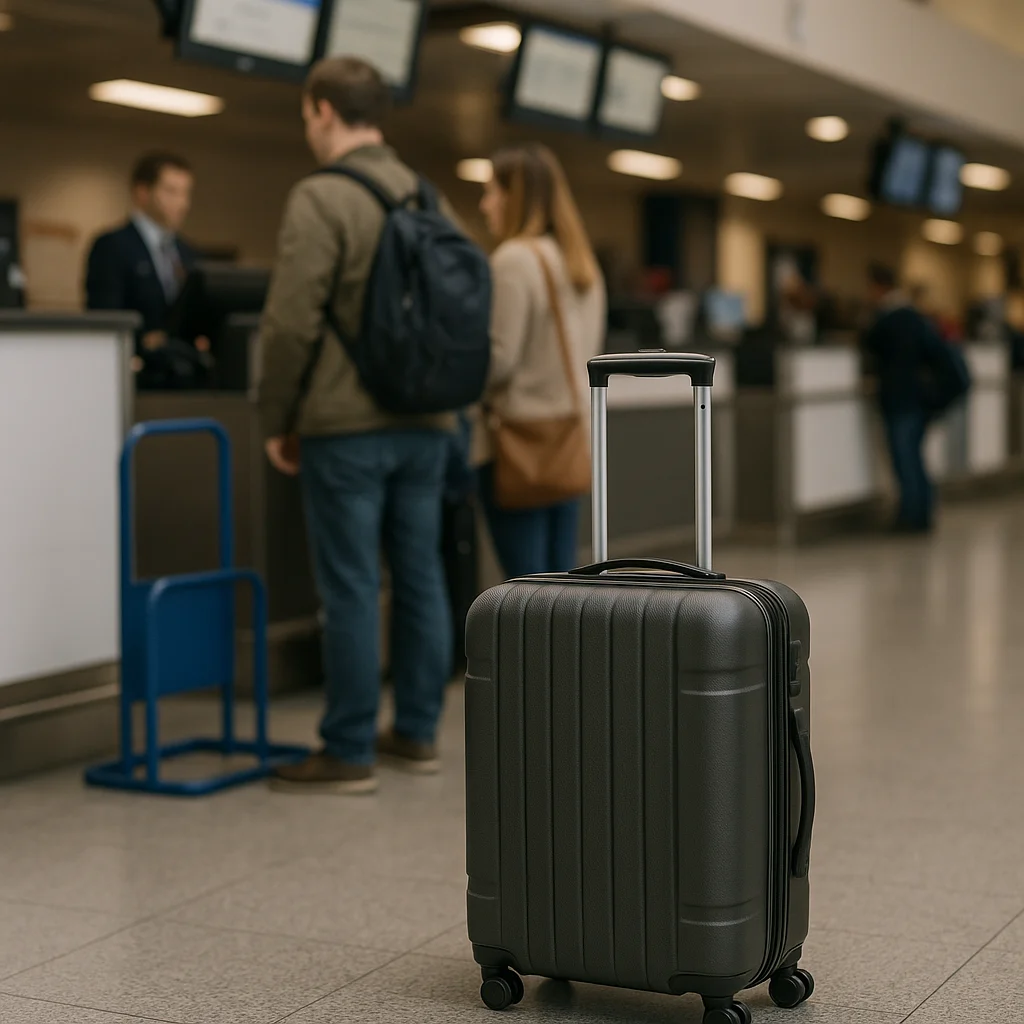A tragic workplace accident at one of Australia’s busiest aviation hubs has spotlighted the dangers faced by airline ground staff. On Saturday, a Qantas employee suffered severe head injuries after falling from an aerobridge at Sydney Airport (SYD), prompting a swift emergency response and raising serious questions about safety standards in airport operations. As investigations unfold, the incident has become a powerful reminder of the occupational risks inherent in the aviation industry, particularly for those working behind the scenes.
This article explores the incident in-depth, analyzes the implications for workplace safety at airports, and examines recent security concerns at Sydney Airport. Our focus keyword, Qantas employee, will help ensure the article is fully optimized for search engines and easily accessible to concerned readers, industry professionals, and the general public.
🚨 A Distressing Incident: What Happened at Sydney Airport?
At approximately 12:30 PM on Saturday, emergency services were called to Terminal 3 of Sydney Airport, where a Qantas employee had reportedly fallen nearly five metres from an aerobridge. Witnesses and authorities have confirmed that the victim, believed to be a woman in her 40s, sustained serious head injuries due to the fall.
The Qantas employee was working at the time of the incident, assisting in routine boarding or disembarking procedures. It is unclear what specific activity was underway when the fall occurred, but the height and environment—typically involving tight, elevated working conditions—presented a dangerous scenario.
🚑 Immediate Medical Response and Hospitalisation
First responders were on the scene within minutes of the reported accident. Multiple crews from NSW Ambulance, including a specialised medical team trained in handling critical trauma, treated the injured Qantas employee on site. Following initial stabilisation, the woman was urgently transported to Royal Prince Alfred Hospital, a major medical facility in Sydney equipped to handle severe injuries.
Hospital officials later confirmed the victim had entered a coma due to her head trauma, underscoring the gravity of the incident. Her condition remains serious, and her family has been notified.
🛫 The Role of SafeWork NSW in the Investigation
In line with protocol, Sydney Airport authorities quickly contacted SafeWork NSW, the state’s official workplace health and safety regulator. A SafeWork NSW spokesperson confirmed that an active investigation is underway to determine what caused the accident and whether safety protocols were breached.
“Our focus is on the welfare of the injured staff member and assisting SafeWork NSW with their enquiries,” said a Sydney Airport spokesperson.
The investigation is expected to include interviews with witnesses, assessment of the aerobridge equipment, review of CCTV footage, and a comprehensive audit of existing safety procedures.
✈️ Qantas Responds to Employee Injury
A spokesperson for Qantas (QF) released a public statement expressing support for the injured staff member and committing to full cooperation with ongoing investigations. The airline emphasized that their top priority is the well-being of their colleague and pledged to provide assistance to both the employee’s family and investigators.
“We are deeply concerned by what has happened and are working closely with all parties to understand how this occurred,” the Qantas spokesperson added.
The airline’s cooperation is crucial as regulators evaluate whether company-level safety training and operational oversight were adequate to prevent such a serious incident.
🧯 Aerobridge Safety: A Critical Look at Ground Operations
Aerobridges, the retractable tunnels connecting aircraft to terminals, are vital infrastructure components used globally in passenger boarding and disembarkation. Yet, these structures involve complex mechanical systems and often require employees to work at heights, especially during maintenance or adjustment.
Workplace safety experts have long warned of the risks involved in aerobridge operations, especially if:
- Safety railings are not secured properly
- Weather conditions affect surface stability
- Equipment is outdated or improperly maintained
- Staff are not adequately trained for emergency situations
In the wake of the Qantas employee’s accident, renewed attention is likely to be directed toward industry-wide safety reforms, particularly in ensuring that fall-prevention systems and personal protective equipment (PPE) standards are universally enforced.
🛃 Recent Security Concerns at Sydney Airport: The Pantea Incident
The tragic fall involving the Qantas employee occurred just weeks after another alarming event at Sydney Airport. In March 2025, 31-year-old Owen John Pantea was detained by Australian authorities after allegedly entering the airport while in possession of a weapon.
Witnesses claim Pantea was seen stabbing seats and guardrails on a public bus en route from Central Station to the airport. Upon arrival, he was found to be carrying a hay-bale hook, a potentially lethal item.
The Australian Federal Police (AFP) quickly intervened at the arrivals forecourt, apprehending Pantea without further incident. Bail was denied at his first court appearance, and he remains in custody as legal proceedings continue.
The episode raised additional red flags about security enforcement and the importance of maintaining public safety across all airport access points.
🏥 A Pattern of Rising Risks for Airport Workers
Airports are dynamic workplaces with thousands of moving parts, making them particularly vulnerable to accidents if safety protocols lapse. Ground staff—like the injured Qantas employee—perform tasks ranging from baggage handling to guiding aircraft and managing passenger boarding. These jobs often occur in fast-paced, high-stress environments with little room for error.
The latest incident at Sydney Airport underscores:
- The need for ongoing staff training on high-risk equipment
- Greater investment in safety auditing systems
- The importance of reporting near-miss incidents to prevent future tragedies
According to a 2023 report by Safe Work Australia, falls from height remain among the top five causes of serious workplace injury across the country, with transport and logistics industries being particularly vulnerable.
🛠️ What Happens Next: Accountability and Preventive Action
As the SafeWork NSW investigation proceeds, both Qantas and Sydney Airport are expected to undergo internal reviews. These may lead to updates in Standard Operating Procedures (SOPs) for working on or near aerobridges.
Potential outcomes may include:
- Mandatory dual-staff presence during high-risk tasks
- Implementation of fall-arrest harness systems
- Enhanced safety drills for all terminal staff
- Upgrades to aerobridge infrastructure to prevent future falls
Until then, airport staff across Australia will likely remain on high alert, mindful of the lessons emerging from this incident.
📢 The Aviation Community Reacts
The wider aviation community, including unions, safety advocates, and aviation engineers, has expressed concern over the incident. The Transport Workers’ Union (TWU) is expected to issue a formal statement pushing for increased worker protections.
In the past, the TWU has called for better mental health support, more rigorous training protocols, and improved protective gear for airline and airport staff. The current situation involving the injured Qantas employee may accelerate these calls into actionable reforms.
❓ Frequently Asked Questions (FAQs)
1. What is the current condition of the injured Qantas employee?
As of the latest updates, the Qantas employee remains in a coma due to severe head injuries sustained from a fall. She is being treated at Royal Prince Alfred Hospital.
2. Who is investigating the fall at Sydney Airport?
The workplace health and safety body SafeWork NSW is leading the official investigation, with full cooperation from Qantas and Sydney Airport.
3. What safety measures might change as a result of this incident?
Likely outcomes include revised safety protocols for aerobridge use, mandatory use of PPE for high-risk tasks, and updated training programs for all airport ground staff.




